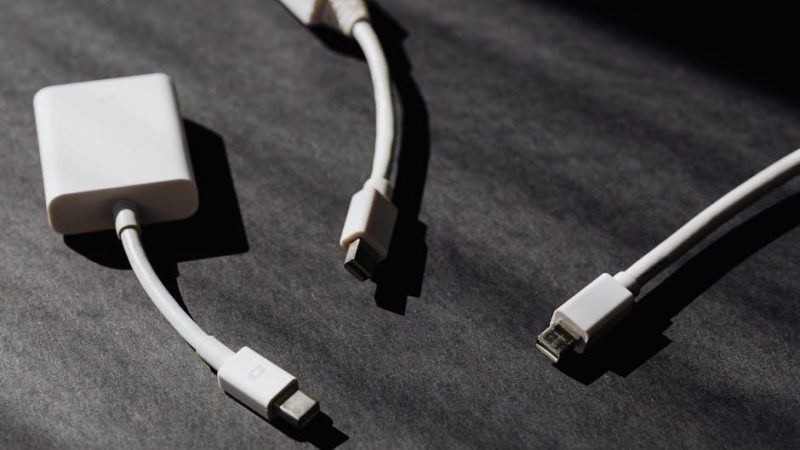pellet stove operating instructions

Pellet Stove Operating Instructions⁚ A Comprehensive Guide

This comprehensive guide provides essential instructions for operating your pellet stove safely and efficiently. It covers everything from understanding your stove model to troubleshooting common issues, drawing from various pellet stove manuals and safety guidelines to ensure proper usage and maintenance.

Pellet stoves are an efficient and environmentally friendly heating solution, utilizing compressed wood or biomass pellets as fuel. These stoves offer a convenient alternative to traditional wood stoves, providing consistent heat output with minimal maintenance. Understanding the basics of pellet stove operation is crucial for safe and effective use.
Pellet stoves are designed with advanced technology, including automated fuel feeding systems and precise temperature controls. This guide will walk you through the essential aspects of operating a pellet stove, covering safety precautions, startup procedures, control panel functions, and regular maintenance.
Whether you’re a new pellet stove owner or looking to enhance your knowledge, this section will provide a solid foundation for understanding how these innovative heating appliances work. Proper operation and maintenance are key to ensuring the longevity and efficiency of your pellet stove, as well as maintaining a safe and comfortable home environment; Remember to always consult your specific model’s owner’s manual for detailed instructions.

Safety Precautions Before Operation
Prioritizing safety is paramount before operating your pellet stove. Start by thoroughly reading the owner’s manual to understand the specific safety guidelines for your model. Ensure the stove is installed according to local building codes and manufacturer’s instructions, paying close attention to clearances from combustible materials like wood and drywall.
Before each use, inspect the stove for any signs of damage or wear. Check the venting system for obstructions or leaks, as proper ventilation is crucial for preventing carbon monoxide buildup. Ensure the hopper is clean and free of debris, and only use approved wood pellets that meet industry standards.
Never operate the stove unattended, especially if children or pets are present. Install carbon monoxide detectors in your home and test them regularly. Keep a fire extinguisher nearby and know how to use it.
Avoid connecting the stove to any air distribution duct or system, and never install a flue damper in the exhaust venting system. By adhering to these safety precautions, you can minimize the risk of accidents and ensure a safe heating experience with your pellet stove.
Understanding Your Pellet Stove Model
Familiarizing yourself with your specific pellet stove model is crucial for safe and efficient operation. Each stove has unique features and specifications outlined in the owner’s manual, which should be your primary resource. Begin by locating the rating label, typically found inside the hopper, to identify the model number and BTU output.
Understand the stove’s components, including the hopper, auger system, combustion blower, convection blower, and control panel. Learn how each part functions and contributes to the overall heating process. Pay attention to the control panel, as it governs the stove’s operation. Identify the buttons, display, and indicator lights, and understand their respective functions.
Different models may offer various operational modes, such as manual, temperature, or thermostat control. Determine which modes are available on your stove and how to switch between them. Note the location of the heat exchange tubes and how to access them for cleaning;
Also, understand the importance of the vacuum switch and POF sensors in the stove’s safety system. By thoroughly understanding your pellet stove model, you can optimize its performance and ensure safe operation.
Fuel Quality and Storage Guidelines
The performance and longevity of your pellet stove heavily depend on the quality of the fuel used. Your Enviro pellet stove has been designed to burn (6mm) dia wood pellets and other biomass fuel. Ensure that you use wood pellets that comply with Pellet Fuels Institute (PFI) standards.
Fuel quality is important. Always choose pellets that are dry, clean, and free from excessive dust or debris. High-quality pellets burn more efficiently, produce less ash, and reduce the risk of clogs or malfunctions. Avoid using pellets that are visibly damaged, moldy, or contain foreign materials.
Proper storage of wood pellets is essential to maintain their quality. Store pellets in a dry, well-ventilated area away from moisture and direct sunlight. Moisture can cause pellets to swell, crumble, and become unusable. Keep the bags sealed until ready for use to prevent moisture absorption.
Do not store pellets directly on the ground. Instead, elevate them on pallets or a waterproof surface to prevent moisture from seeping in. Regularly inspect your pellet supply for any signs of damage or deterioration. By adhering to these fuel quality and storage guidelines, you can optimize your pellet stove’s performance and extend its lifespan.
Step-by-Step Startup Procedure
Starting your pellet stove involves a series of steps to ensure safe and efficient operation. First, before starting, check that the hopper is clean and free of any foreign matter. Ensure the combustion blower is on. Then, fill the hopper with wood pellets, being careful not to allow any parts of the bag or foreign objects into the hopper.
Next, select your desired operational mode (Manual, Temp, or Thermostat) using the control panel. Power on the stove; The igniter will heat up, and the auger system will start delivering pellets into the burn pot. Smoke may occur during ignition but will evacuate once the flame appears in the burn pot.
Monitor the ignition process. Once the fire is lit and the stove reaches operating temperature, the work stage box on the screen will read “Heating,” and the room blower fan will engage. This indicates that the stove is now heating your space. Adjust the heat output and fan speed as needed.
If the stove fails to ignite, consult the troubleshooting section of your manual or contact a qualified technician. Never attempt to modify or bypass any safety features of the stove.
Control Panel Functions and Settings
The control panel is the central interface for operating your pellet stove, featuring various functions and settings to manage its performance. Typically, the control panel includes an infrared receiver for remote control operation. The power indicator illuminates when the main power is switched on, showing that the stove is active. An alarm light indicates faults, such as low temperature or ignition failure, prompting you to consult the troubleshooting section.
The on/off button starts and stops the stove’s operation. The display shows the current mode (Manual, Temp, Weekly, or Thermostat), work stage (Igniting, Heating, Fire Off, Cleaning, Standby, Stop), desired temperature, and heat power level.
Settings can be adjusted by pressing and holding the enter button, leading to the set data screen. Use the scroll up and scroll down buttons to navigate through the list, and then press the enter button to select.
The control panel allows you to set the time and day, temperature units, language, and ash cleaning cycle. Accessing the general settings allows you to change the temperature.
Operational Modes⁚ Manual, Temperature, and Thermostat
Pellet stoves offer various operational modes to suit different heating preferences and needs. The three primary modes are Manual, Temperature (Temp), and Thermostat.
In Manual mode, users directly control the heat output by adjusting the heating power level, typically on a scale from 1 to 5. This mode provides direct control over the stove’s performance, allowing users to customize the heat output based on their immediate needs.
Temp mode allows users to set a desired room temperature, and the stove automatically adjusts the heating power level to maintain this temperature. This mode provides a balance between automation and user control, ensuring a consistent and comfortable environment.
The Thermostat (Thstat) mode enables the stove to be controlled by a wired remote thermostat. In this mode, the stove responds to the thermostat’s readings, turning on or off to maintain the set temperature. Thermostat mode offers the highest level of automation and energy efficiency. When the thermostat engages, the stove starts heating.
Adjusting Heat Output and Fan Speed
Adjusting the heat output and fan speed on your pellet stove allows you to customize the heating performance to match your specific needs and preferences. The heat output determines the amount of heat produced by the stove, while the fan speed controls the distribution of that heat throughout the room.
To adjust the heat output, use the control panel to select the desired heat level, typically ranging from 1 to 5. A higher heat level results in a greater heat output, while a lower level produces less heat. Choose the appropriate heat level based on the size of the room and the desired temperature.
Fan speed can be adjusted to control how quickly and evenly the heat is distributed. A higher fan speed will circulate the heat more rapidly, while a lower speed provides a gentler, more localized warmth.
Experiment with different heat output and fan speed settings to find the combination that provides the most comfortable and efficient heating for your space.
Regular Maintenance and Cleaning Procedures
Regular maintenance and cleaning are crucial for ensuring the efficient and safe operation of your pellet stove. Ash buildup, creosote accumulation, and other debris can reduce performance, increase the risk of malfunctions, and even pose a fire hazard.
Daily maintenance should include cleaning the burn pot to remove ash and unburned pellets. This ensures proper airflow and ignition. Weekly, inspect and clean the heat exchange tubes to maximize heat transfer and efficiency. Use a brush or vacuum to remove any accumulated ash or soot.
Monthly, check and clean the venting system to prevent blockages that could lead to carbon monoxide buildup. Annually, schedule a professional inspection and cleaning to address any potential issues and ensure optimal performance.

Troubleshooting Common Issues
Pellet stoves, while reliable, can sometimes encounter operational issues. Understanding common problems and their solutions can save you time and money on repairs. One frequent issue is the stove failing to ignite. This can be due to a lack of pellets in the hopper, a faulty igniter, or a clogged burn pot. Ensure the hopper is full, inspect the igniter for damage, and thoroughly clean the burn pot.
Another common problem is poor heat output. This could be caused by using low-quality pellets, inadequate airflow, or a dirty heat exchanger. Always use certified pellets, check the venting system for obstructions, and clean the heat exchanger tubes regularly.
If the stove shuts down unexpectedly, it may be due to overheating, a blocked exhaust, or a malfunctioning sensor. Allow the stove to cool down, inspect the exhaust vent for blockages, and consult the owner’s manual for sensor troubleshooting.
Safety Shutdown and Emergency Procedures
Knowing how to safely shut down your pellet stove in both normal and emergency situations is crucial for preventing accidents and ensuring the longevity of your appliance. For a normal shutdown, follow the manufacturer’s instructions, which typically involve turning off the power and allowing the stove to cool down completely.
In an emergency, such as a fire or a malfunction that poses an immediate risk, it’s essential to act quickly. Immediately turn off the power to the stove by unplugging it from the outlet or switching off the circuit breaker. Do not attempt to extinguish a fire inside the stove with water, as this can cause a dangerous steam explosion.
If there is a fire outside the stove, use a fire extinguisher rated for Class A fires, which are common combustibles like wood and paper. Evacuate the area and call emergency services. After any emergency shutdown, have the stove inspected by a qualified technician before attempting to use it again.
Long-Term Storage and Seasonal Maintenance
Proper storage and seasonal maintenance are critical for ensuring your pellet stove operates efficiently and safely for years to come. Before storing your pellet stove for an extended period, such as during the off-season, it’s essential to thoroughly clean it. Remove all ash from the burn pot, firebox, and exhaust pathways, as accumulated ash can attract moisture and cause corrosion.
Inspect the stove for any signs of damage or wear, such as cracks, rust, or loose connections. Address any issues promptly to prevent them from worsening during storage. Disconnect the stove from the power source and, if possible, cover it with a protective tarp or cover to shield it from dust and moisture.
Store the stove in a dry, well-ventilated area to prevent rust and corrosion; Before using the stove again after storage, inspect all components, clean the venting system, and ensure all connections are secure. Following these steps will help maintain your pellet stove in optimal condition.



